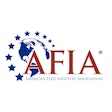Fans of the band Asleep at the Wheel are likely familiar with its version of the song "Across the Alley from the Alamo" (much older folks will remember it as a Mills Brothers song). In the case of the Association of American Feed Control Officials (AAFCO) January mid-year meeting in San Antonio, Texas, USA, it was right across the street from the Alamo. In the shadow of this symbol of perseverance in times of adversity, AAFCO deliberated on petfood regulatory matters.
Weight management
After considering the report and recommendations of the Calorie Statement Working Group, the AAFCO Pet Food Committee (PFC) accepted, at least in principle, the American College of Veterinary Nutrition proposal to require mandatory calorie content statements on dog and cat food labels. It did not accept any specific regulatory verbiage, however.
Still in question is whether this amendment should apply to all dog and cat food products as originally proposed or whether there should be exceptions (e.g., supplements and treats). A new working group has been assigned to look at this. In fact, PFC combined this group with another one assigned last August to look at the issue of weight management/control claims and develop a comprehensive approach.
Small business policy?
A new issue brought before PFC is whether there should be an AAFCO policy regarding deviation from strict compliance with state labeling or registration requirements for small businesses such as pet bakeries and sellers of homemade treats. The issue is that many of these modest enterprises are not aware of the existing state requirements or find them too burdensome, thus failing to register and subsequently avoiding all regulatory scrutiny.
There was consensus among the attendees of the need for more education and outreach, but less of a meeting of the minds as to whether and what exceptions to the rules may be appropriate. However, there is precedent in the Food and Drug Administration (FDA) and US Department of Agriculture to make some regulatory exceptions for small businesses. A new working group has been formed to explore these matters and make recommendations.
The PFC formed yet another working group to look at the proposed labeling for raw milk products as recommended by the AAFCO Feed Labeling Committee. Also, the deliberations of the expert panel in reviewing and revising the AAFCO Dog and Cat Food Nutrient Profiles and feeding trials are continuing, as are plans for AAFCO to host a Petfood Regulatory Workshop in conjunction with the annual meeting in August. Finally, it was reported that a revised edition of the AAFCO Petfood and Specialty Petfood Labeling Guide is now available for purchase from AAFCO's web site (www.aafco.org).
Adulteration confusion
The Model Bill & Regulations Committee (MBRC) had a number of action items on its agenda but became quickly bogged down during discussion of the recently drafted Model Good Manufacturing Practice Regulations for Feed and Feed Ingredients. This was sent for consideration from the Feed Manufacturing Committee (FMC) after years of deliberation.
The document raised a number of concerns for MBRC, but most notable is the draft regulations' definition of adulteration. It varies significantly from the definition for the term in the Model Bill and, for that matter, from the Federal Food, Drug and Cosmetic Act. The reported intent of FMC in drafting it this way was to focus on cases of adulteration having direct safety consequences while ignoring those that do not (e.g., viable weed seeds).
I don't think it's prudent or workable to have two AAFCO documents with two different definitions for the same term; it can only lead to confusion and inconsistent interpretation. MBRC has requested a group comprised of members from both MBRC and FMC be formed to resolve these concerns.
Not ingredient names
The item with the most potential to affect petfoods discussed by the Ingredient Definitions Committee was the proposed feed terms for various forms of carbohydrates, namely fructans, starch and sugars. Of concern was the possibility of misinterpretation of intended use of these terms. They are intended to allow for claims and guarantees relating to the concentrations of these substances in a product.
Current AAFCO policy does not consider claims for carbohydrates to be necessary or meaningful, since it is a vague term that comprises a large category of substances. However, use of these more precise terms on the label could have nutritional merit. The terms are not intended for use as a part of an ingredient name, though. The addition of a parenthetical "(nutrient)" after each term in its listing in the AAFCO Official Publication will distinguish these terms from those allowed to be used as part of an ingredient nameusually distinguished by the parentheticals "(part)" or "(process)" in its listing.
Longest acronym award
Perhaps the biggest topic discussed within several committees was the new federal legislation affecting petfood safety and labeling (see my December 2007 column). AAFCO has formed a multi-committee Coordination Task Force to deal with matters pertaining to the Food and Drug Administration Amendments Act of 2007in doing so creating the longest acronym I've seen in recent years (FDAAAAAFCOCTF, pronounced eff-dee-aaaaay-eff-coke-tif). This task force will serve as the liaison between AAFCO and FDA.
















